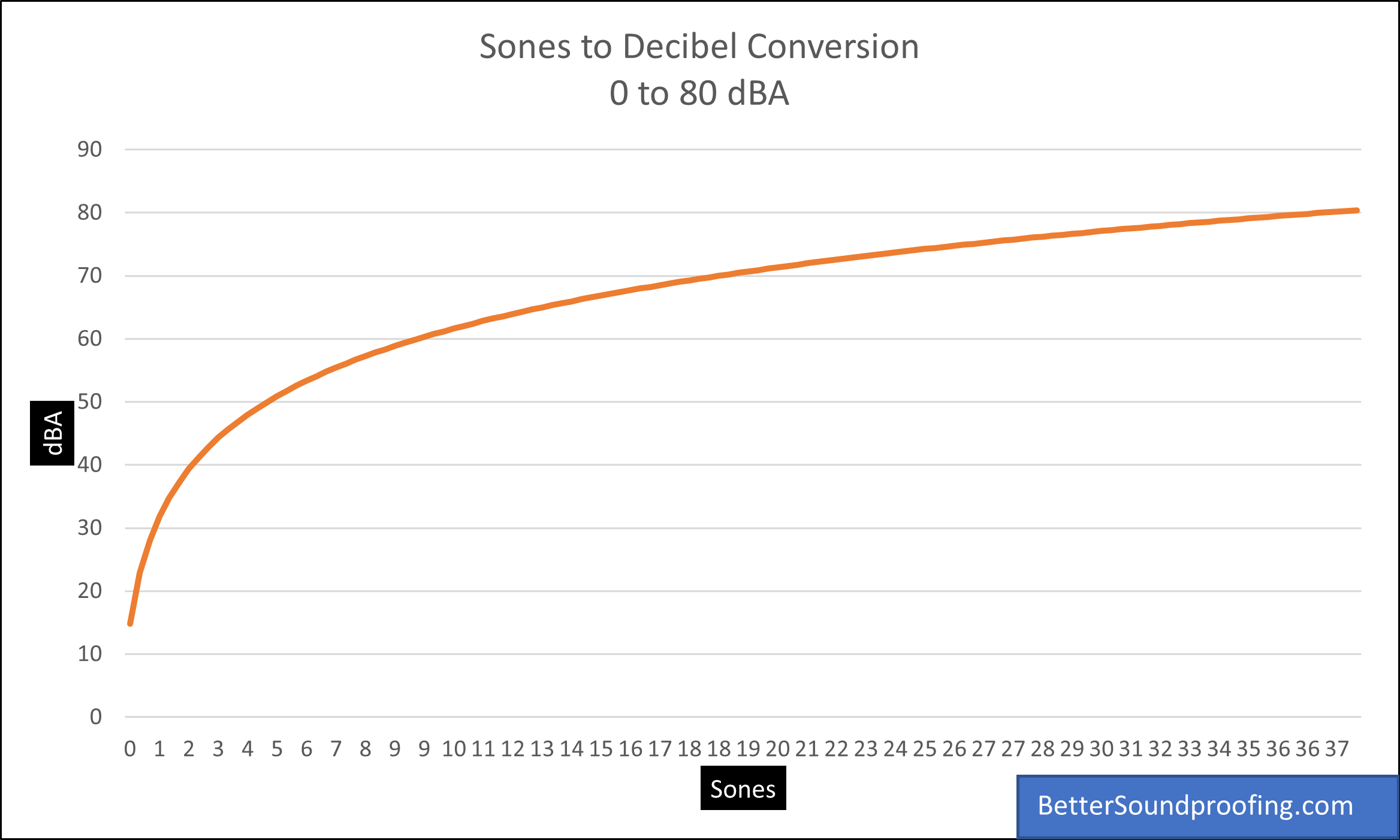Unveiling The Sound: What Do 10 Sones Really Sound Like?
Deciphering Sones: Beyond Decibels
Before we *do* explore the specific experience of 10 sones, let's clarify what sones are and how they differ from decibels. Decibels measure sound pressure level, a physical quantity. For instance, a sound that *does* measure 60 dB is physically ten times more intense than a 50 dB sound. However, our ears *do not* perceive loudness in a linear fashion. A 60 dB sound *does not* sound twice as loud as a 50 dB sound to most people. Sones, on the other hand, *do* represent perceived loudness. The unit is defined such that 1 sone corresponds to the loudness of a 1000 Hz (1 kHz) tone at 40 dB Sound Pressure Level (SPL). The beauty of the sone scale is its intuitive nature: if a sound *does* measure 2 sones, it is perceived as twice as loud as a 1-sone sound. Similarly, a 10-sone sound *does* feel twice as loud as a 5-sone sound, and ten times as loud as a 1-sone sound. This linearity in perception is what *does* make sones so valuable in fields like acoustics, product design, and environmental noise assessment. Our auditory system *does* perform a complex task, translating physical vibrations into meaningful sounds. While decibels *do* give us a technical reading, sones *do* give us a better idea of the subjective experience. This distinction *does* matter significantly when designing quieter products or assessing noise pollution.The Experience of 10 Sones: A Perceptual Journey
Now, let's get to the heart of the matter: what *do* 10 sones actually sound like? To put it into perspective, a 1-sone sound is roughly equivalent to a quiet refrigerator hum or the soft murmur of a library. When we *do* talk about 10 sones, we're discussing a sound that *does* feel ten times louder than that baseline. Translating 10 sones back into decibels can be tricky, as the relationship between sones and decibels is not a simple linear one and *does* depend on the frequency of the sound. However, for a broadband sound (like general environmental noise) or a 1 kHz tone, 10 sones typically correspond to approximately 70 dB SPL. To give you a clearer picture, here are some common sounds that *do* approximate the loudness of 10 sones (around 70 dB): * **A running washing machine:** When it's in full spin cycle, your washing machine *does* produce a consistent hum that often hovers around 70 dB. * **A vacuum cleaner:** The sound of a typical household vacuum cleaner *does* fall squarely into the 70-75 dB range. * **A busy street with moderate traffic:** The general ambient noise from cars passing by, distant horns, and conversations *does* add up to a sound level that can easily reach 70 dB. * **A loud conversation:** Two people speaking loudly to each other, perhaps across a room, *do* generate sound levels in this range. * **A ringing telephone:** The classic telephone ring *does* often register around 70-80 dB. When you *do* hear a 10-sone sound, it *does* make its presence known. It's not just background noise; it's a sound that *does* demand your attention. You *do* notice it, and it *does* feel significantly louder than, say, the hum of a refrigerator (which might be around 3-4 sones).The Impact on Our Senses
Our bodies *do* react to sound in various ways. The nervous system, a network of nerve cells that controls many parts of the body, *does* play a crucial role in processing auditory signals. When exposed to a 10-sone sound, your brain *does* register it as distinctly loud. While 10 sones are not inherently dangerous for short durations, prolonged exposure to sounds at this level *does* have implications. For many people, tinnitus improves when they are in quieter environments, and conversely, constant exposure to moderate to loud noise *does* exacerbate such conditions. Just as certain physical reactions can be uncomfortable, prolonged sound exposure *does* lead to auditory fatigue or even temporary hearing threshold shifts. We *do* need to be mindful of how long we are exposed to these levels.Measuring and Managing Sound: What We Can Do
Measuring sones *does* require specialized equipment and calculations, often performed by acoustic engineers. Unlike a simple decibel meter, a sone meter *does* take into account the frequency content of the sound and how the human ear perceives different frequencies. What *can* we *do* to manage sound levels in our environment? If you *do* find yourself regularly exposed to sounds at or above 10 sones, there are practical steps you *can do* to protect your hearing: * **Use Hearing Protection:** Earplugs or earmuffs *do* significantly reduce the sound pressure reaching your eardrums. * **Reduce Source Noise:** If possible, *do* choose quieter appliances or modify existing ones to reduce their noise output. * **Increase Distance:** Sound intensity *does* decrease with distance. Moving further away from a noise source *does* help. * **Soundproofing:** Adding insulation, heavy curtains, or specialized acoustic panels *does* help absorb or block sound, making your environment quieter. * **Take Breaks:** If you *do* work in a noisy environment, take regular breaks in a quieter area to give your ears a rest. Remember, if we *do* follow guidelines for hearing protection, we won't get into trouble with long-term hearing damage. People who *do* well in protecting their hearing often incorporate these simple habits into their daily routines. We *do* have the power to influence our sound environment.The Nuance of Perception: Why 10 Sones Isn't Always 10 Sones
While the sone scale *does* aim for a universal measure of perceived loudness, individual perception *does* vary. Factors such as age, hearing health, and even psychological state *do* influence how loud a sound feels. For example, a 10-sone sound might feel slightly louder or quieter to different individuals. Furthermore, the frequency content of the sound *does* play a significant role. A 10-sone sound composed primarily of low frequencies *does* feel different from a 10-sone sound dominated by high frequencies, even if their perceived loudness is the same. Our ears *do* have different sensitivities across the audible spectrum. The context also *does* significantly alter our perception. A 10-sone sound in an otherwise silent room *does* feel much more intrusive and noticeable than the same 10-sone sound amidst a bustling crowd. Our brains *do* adapt and filter information based on the surrounding environment. This means that while a vacuum cleaner *does* register around 10 sones, you might perceive it differently depending on whether you're using it in a quiet home or a noisy workshop.Summary
In conclusion, understanding what 10 sones sound like *does* provide a valuable perspective on how we perceive loudness. It represents a sound that *does* feel ten times louder than a very quiet baseline (1 sone), typically corresponding to common noises like a running washing machine, a vacuum cleaner, or a busy street (around 70 dB). While 10 sones are not immediately dangerous, prolonged exposure *does* warrant attention to hearing protection. Our nervous system *does* process these sounds, and continued loud noise *does* affect our auditory health. By understanding sones, we *do* gain a deeper appreciation for the complex interplay between physical sound and human perception, empowering us to make choices that *do* promote a healthier and more comfortable auditory environment.
Sones to dB Conversion for Accurate Sound Measurement - Living Pristine

Sones and numbers 23095633 Stock Photo at Vecteezy

Sones Ratings and Charts - Better Soundproofing